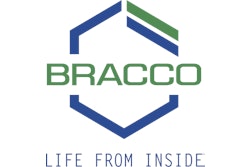A U.S. federal court has ordered GE Healthcare of Chalfont St. Giles, U.K., to pay $11.4 million to Bracco Diagnostics of Princeton, NJ, over marketing claims made regarding GE's Visipaque x-ray contrast agent.
The U.S. District Court for the District of New Jersey found that GE disseminated false messages in Visipaque advertising. In addition to the payment, the court ordered GE to issue a news release and also place the information on its Web site, detailing the court's decision, and to issue corrective advertisements.
The lawsuit, which Bracco filed in 2003, stemmed from the Nephrotoxic Effects in High-Risk Patients Undergoing Angiography (NEPHRIC) clinical study published in 2003 by the New England Journal of Medicine, which compared GE's Visipaque and Omnipaque contrast agents.
Bracco asserted that the study only compared the two GE products, but that GE misrepresented the study in an attempt to claim that Visipaque was safer than other products that were not included in the study, including Bracco's Isovue. Bracco maintained that independent studies, Bracco studies, and GE's own clinical research demonstrated the inappropriateness of GE's claims.
Court orders
In the March 25 decision, U.S. District Court Judge Freda Wolfson permanently enjoined GE from claiming the following:
- All low-osmolar contrast media (LOCM) produce the same rate of contrast-induced nephropathy.
- Visipaque is renally superior to all LOCM.
- Visipaque performs better than all LOCM because of lower osmolality and associated costs.
- Visipaque causes lower incidence of major adverse cardiac events (MACE) than all LOCM (although GE may claim, based on the VICC [Visipaque v. Isovue in Cardiac Catheterization] trial, that Visipaque causes less MACE than Bracco's Isovue for patients undergoing percutaneous cardiac intervention within the initial 48 hours after the procedure).
- Visipaque causes less discomfort than all LOCM.
In addition, the court ordered GE to limit its advertising to the procedures, contrast medium, patient types, and circumstances that were used in the studies presented at trial. In addition, when citing studies in its advertising, GE must -- in the court's words -- "plainly identify, in same size print (and not in footnoted material), the [contrast media] used in the study and that the findings of that study are limited to the studied [contrast media]."
GE has 60 days to comply with the orders, which include issuing a news release, posting the court's decision on its Web site, and issuing "corrective advertisements." The company also must retrain its sales and marketing personnel in accordance with the court's decision.
'Speaks for itself'
"The court order speaks for itself," said Dr. Alberto Spinazzi, Bracco's senior vice president for group medical and regulatory affairs. "In light of the evidence that was presented at the trial, it is clear the court concluded that GE did promote false messages. Because of that, the court permanently enjoined GE from making further false claims and ordered them to implement corrective actions and to pay Bracco that amount of money."
While acknowledging the weight of the court rulings and its orders, GE officials noted that the court rejected Bracco's assertions that GE manipulated the conduct or results of clinical trials or hid adverse clinical data. Additionally, the court found that Bracco failed to prove that it lost group purchasing organization contracts or other sales based on GE's alleged actions.
As to GE's promotion of Visipaque, GE cited portions of the court document that found that most of GE's messages "were proper and were backed up by the underlying scientific studies that they referenced," and that "the majority of [GE Healthcare's] messages were in fact true and properly relied on reliable scientific studies to support them."
"We believe, at GE Healthcare, our sales and marketing efforts for Visipaque, since I have been here and before, have always been transparent, ethical, and within government standards," said Dr. Eric Cantor, head of medical and professional services with GE Healthcare Medical Diagnostics. "When you look at the details, I think we feel vindicated in a lot of respects."
Process review
Cantor said GE will review all its promotional material and ensure that "once again it is compliant. We have a process in place that we routinely utilize, which includes marketing and promotional materials as well as medical, legal, and regulatory guidelines. ... We understand there were a few concerns identified at that time, but fortunately they were not massive. We acknowledge that, but nothing was identified that says we are not following regulatory, legal, and FDA policies, and the policies we have in place are fair and balanced and serving us well."
In reaction to Bracco's initial 2003 litigation, GE filed a counterclaim against Bracco, asserting that Bracco falsely promoted Isovue as less renally toxic than Omnipaque and Visipaque, based on a comparison of studies. The court ruled in its March 25 decision that because Bracco has discontinued its use of the advertisements, GE was not entitled to injunctive relief in its countersuit.
Given the wide-ranging decision, Spinazzi said Bracco does not expect to take the litigation any further. "We are certainly pleased with the court decision," he added. "We believe it is very important to properly inform healthcare providers and healthcare professionals about results in clinical studies, and provide them with all the evidence to help them make proper management decisions. So, we are pleased with this decision."
Cantor, meanwhile, said, "Although we feel overall good about the court decision, we are disappointed that there was any verdict against us and we are seriously determining if we want go forward and appeal this decision."
By Wayne Forrest
AuntMinnie.com staff writer
March 30, 2009
Related Reading
Iodixanol more cost-effective than iohexol in renal angiography, April 14, 2005
Bracco issues Isovue clarification, March 17, 2003
Iso-osmolar contrast agent less likely to be nephrotoxic in high-risk patients, February 6, 2003
Copyright © 2009 AuntMinnie.com




















